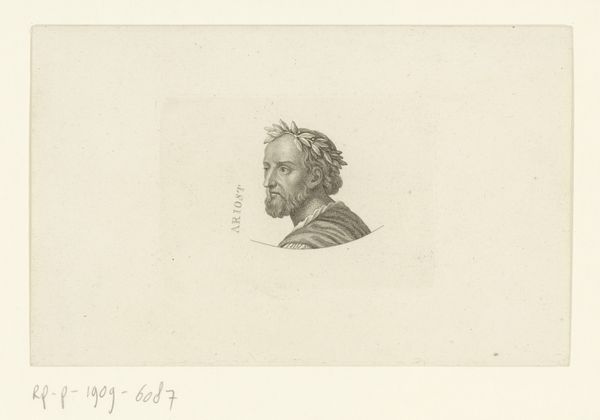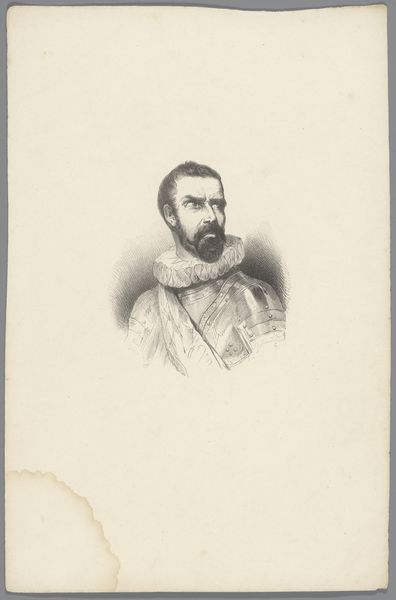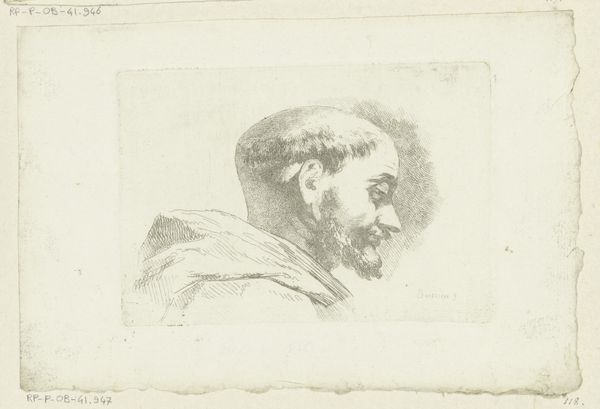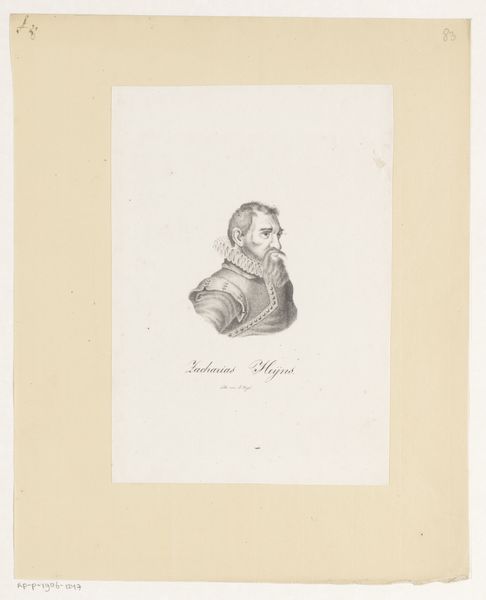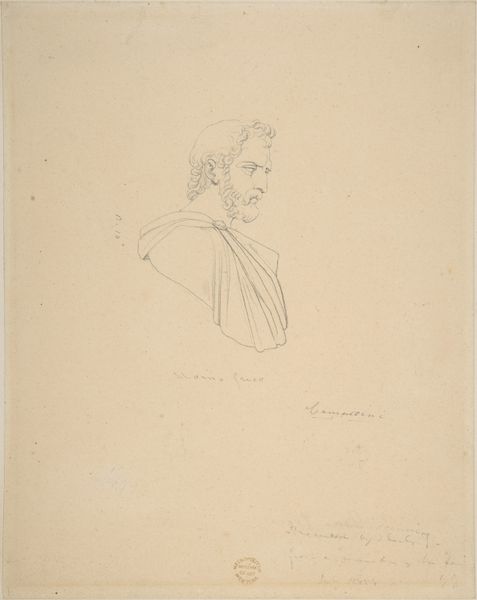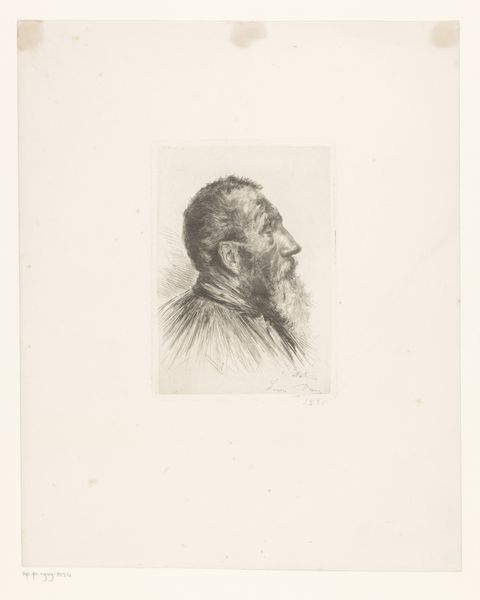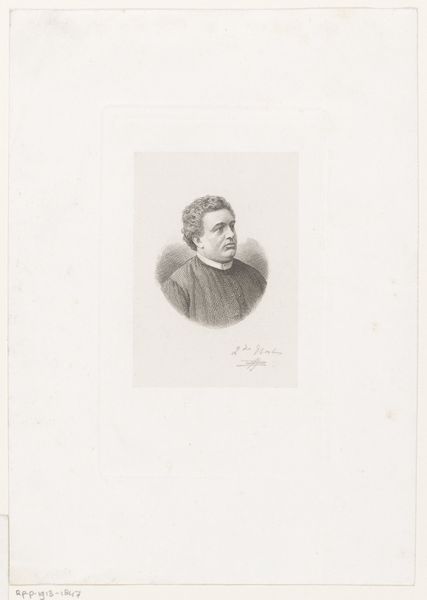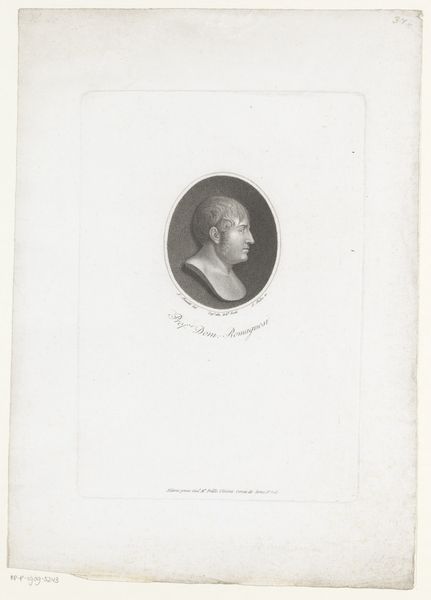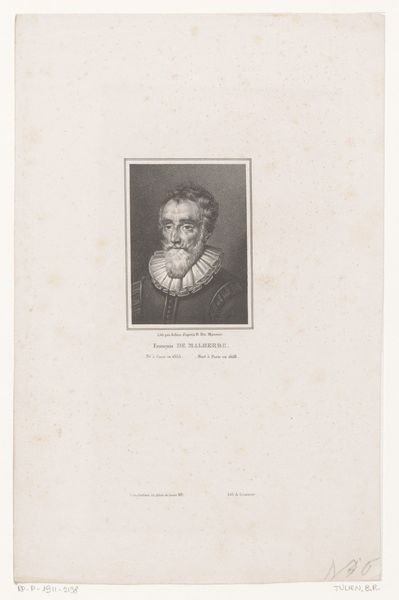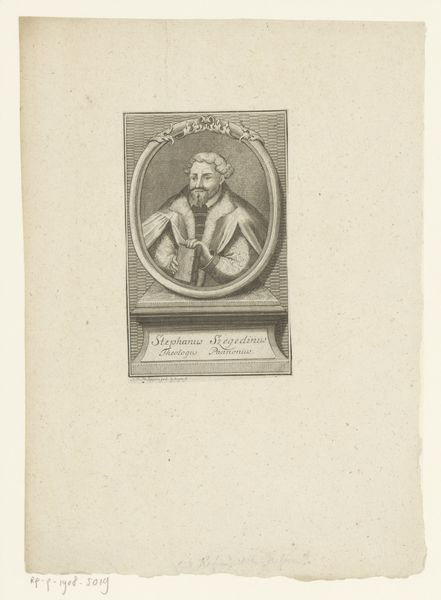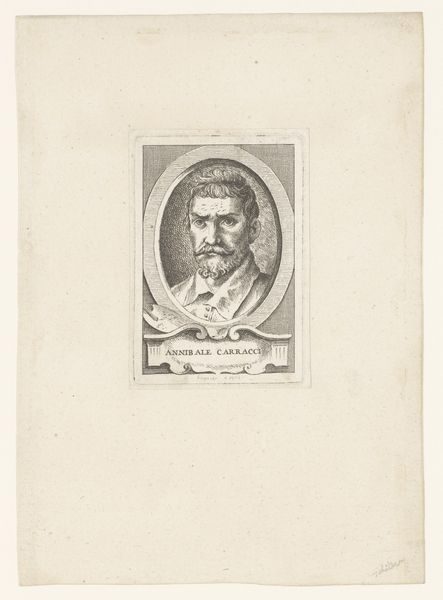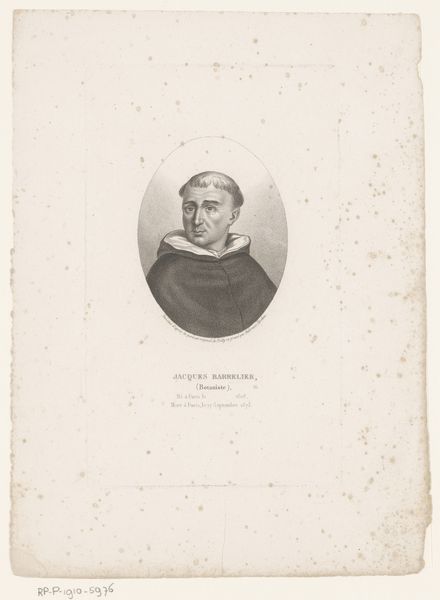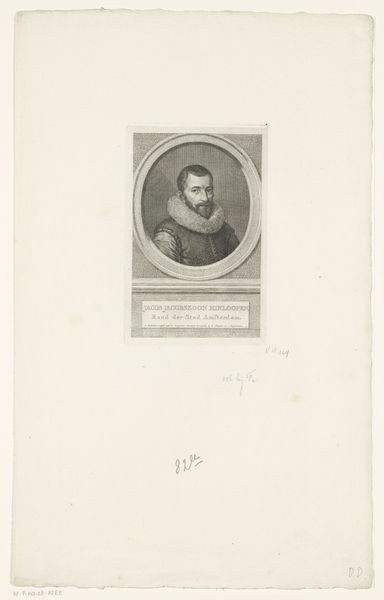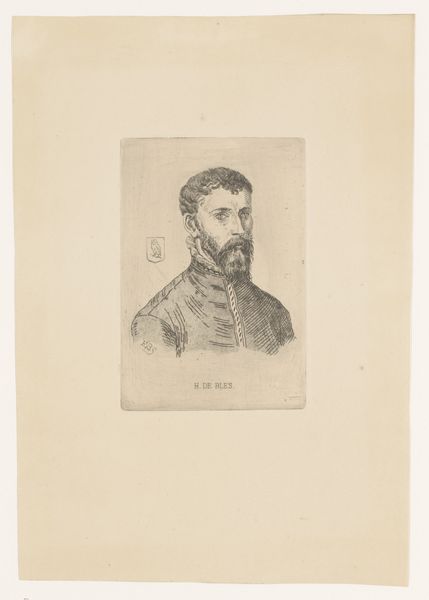
print, engraving
#
portrait
#
neoclacissism
# print
#
old engraving style
#
engraving
Dimensions: height 73 mm, width 98 mm
Copyright: Rijks Museum: Open Domain
Ernst Ludwig Riepenhausen made this engraving of Michelangelo, although we don't know precisely when. The image exemplifies the enduring legacy of Renaissance artists within European cultural institutions. Riepenhausen, working in the late 18th and early 19th centuries, draws on established visual codes to evoke the image of the archetypal Renaissance genius. The stern gaze, the flowing beard – all serve to construct a vision of artistic brilliance for the consumption of the artist's contemporaries. But why Michelangelo? The answer lies in the history of art institutions: academies, museums, and galleries, promoted certain artists as exemplars. The image creates meaning through historical association, reminding the viewer of Italy and the Renaissance at a time of burgeoning German nationalism. Understanding this artwork requires us to examine the institutions, that shape taste and artistic value. To dig a little deeper, we could investigate the print market of the time or delve into the history of art academies and their prescribed canons.
Comments
No comments
Be the first to comment and join the conversation on the ultimate creative platform.
